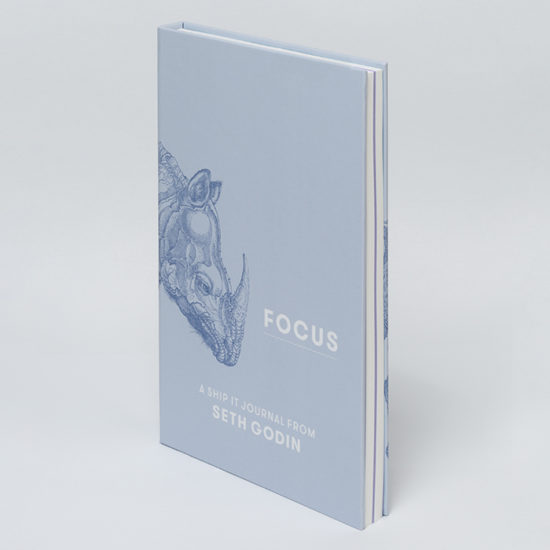
One of these slim volumes will give you as much insight as several hundred dollars of business coaching. SHIPIT! -Jule Kucera If you have a project, idea, or new business up your sleeve, give yourself the gift of this workbook.

If you are serious about shipping, whatever it is you want to ship, get this workbook. It was at this point that the call leader said, "Jule, what do you think is important for us to cover in our project kick-off meeting next week?" I reached down to my briefcase, pulled out SHIPIT, opened the workbook, and started to talk. The location was great until lunchtime when I was suddenly surrounded by lots of small children, one of whom was SCREAMING. On the way back from Seth's Minneapolis Linchpin session I pulled off the road and into a McDonald's to take a conference call. This recommendation of SHIPIT is not based simply on a look-see through the workbook-I've already used it.
#Seth godin shipit journal software
The workbook is a series of questions that are an amalgam from Godin's other books-primarily Linchpin and Tribes, but also one he didn't write (but recommended in Free Prize Inside), the Software Project Survival Guide, by Steve McConnell. If you pick up a pen (not a pencil) and answer the questions in this workbook-honestly, of course-you will be well on your way to either (A) a successful project, or (B) the realization that the project is doomed and shouldn't be started (which is a very good thing to know in advance). Wish granted: SHIPIT, by Seth Godin, who at 12 books and 3700+ blog posts and, oh yeah, a couple of businesses, knows a thing or two about shipping. If you’re stuck in any creative endeavor and want support in sustaining your own consistent creative practice, I invite you to join us.Wouldn't it be nice if someone who is really great at project management and shipping (AKA: getting it out the door) would take you by the hand and set you up for success with your new project? In January, I’ll be offering a book group focusing on this book and its many lessons for those of us striving to hone our creative capacities. This applies to all creative endeavors, of course, not just writing. And like so many of the best teachers of writing I’ve had the pleasure of knowing and working with, he says engaging in a consistent practice is the best way forward. But there is a pattern to who succeeds and who doesn't.

In it, he reminds us that creative work doesn't come with a guarantee. Seth Godin’s latest book is called The Practice: Shipping Creative Work. Strive for the largest viable time period daily and smallest viable audience. And words of truth and authenticity will seek expression through you.Īs Godin says, “The time you’re spending catastrophizing what you believe to be your problem just doesn’t work.”įellow creatives, print Godin’s comment on writer’s block and read it daily.

Given time and space, “pieces” will find you, emerging into form out of thin air. Drop all agendas: to be good, or well-liked, or smart, or famous, or well-published. OK, with that in mind, go back and read last week’s blog on “The Zen of Writing.” Here’s a key part of what I said: And bad writing over time, if you do enough of it, can’t persist. You don’t have to ship it to the world, but you have to do the bad writing. And the way through this fear is to do your bad writing. It implies that you have a fear of what the world will say when it encounters your bad writing. The feeling of writer’s block is actually a fear of bad writing. Writer’s block is real but it does not exist.

Where is your bad writing? There’s no such thing as writer’s block. So here’s Seth’s take on writer’s block as he explained it in a recent interview with Tim Ferriss: (So nice that Seth Godin and I are thinking alike!) Seth Godin has something brilliant to say about writer’s block, and interestingly, what he says aligns beautifully with the advice I offered just last week about writing. I offer a short post today that is an addendum to last week’s post.


 0 kommentar(er)
0 kommentar(er)
